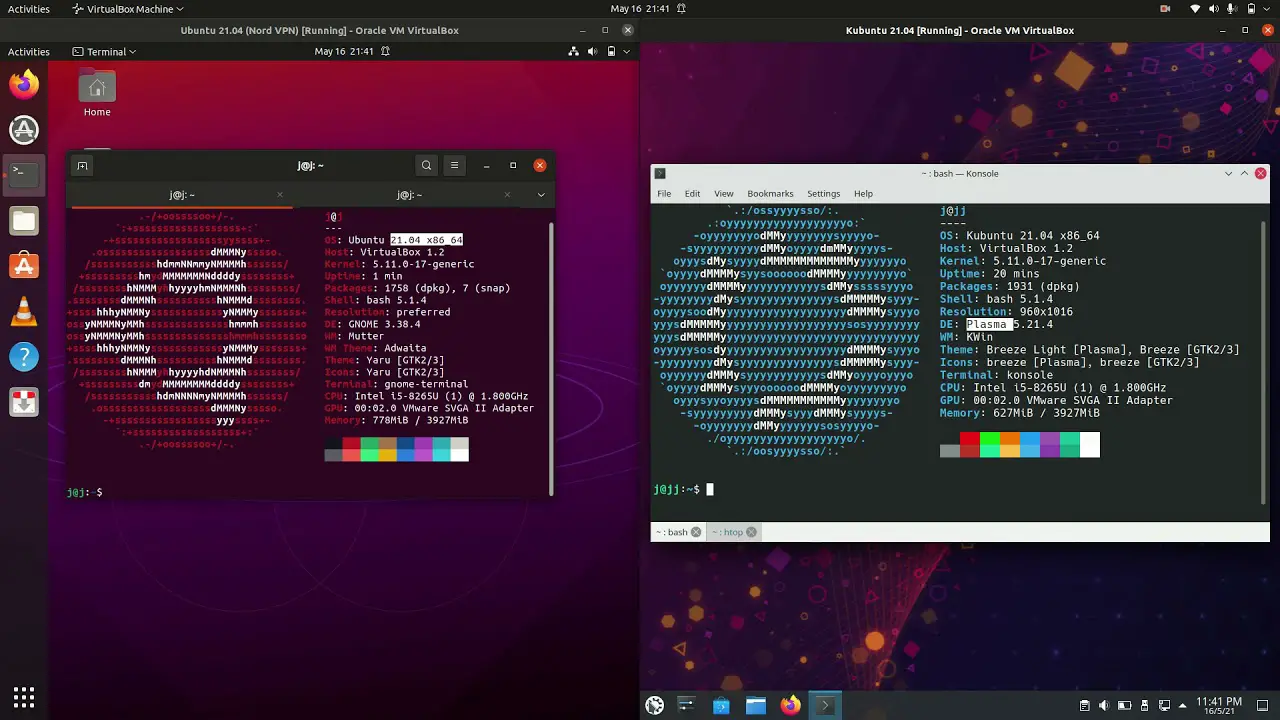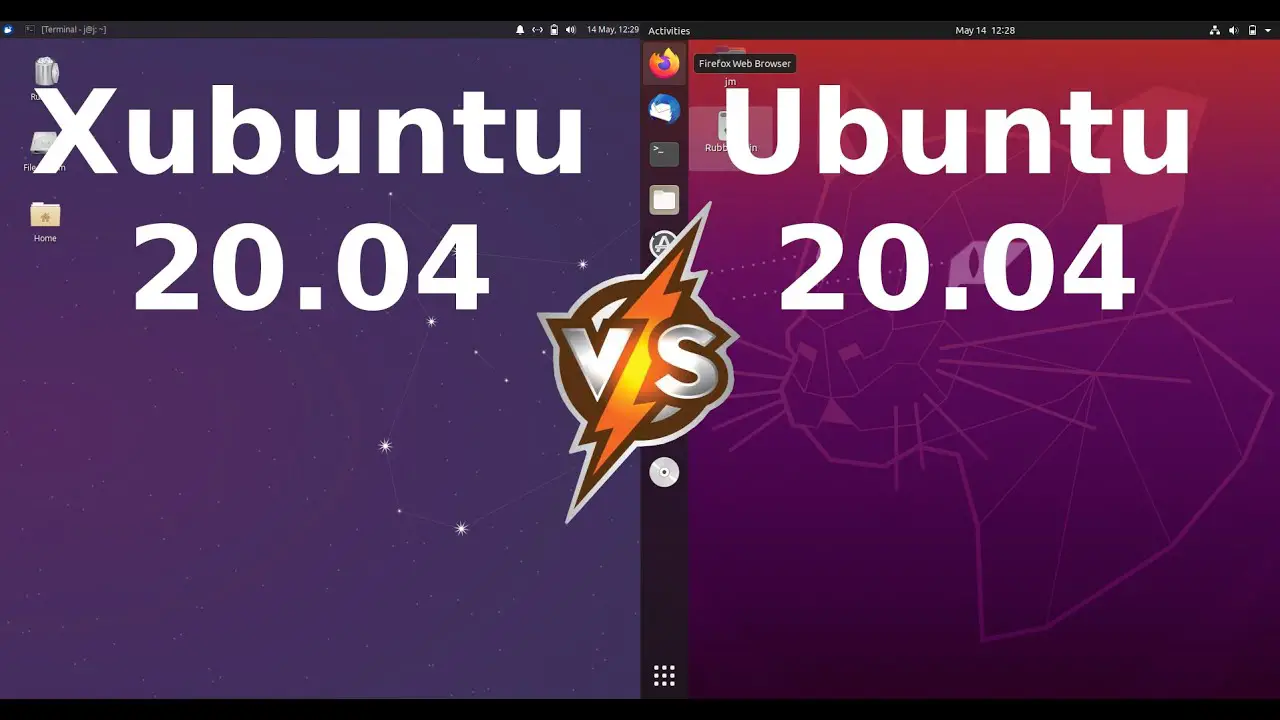Ubuntu vs. Kubuntu: A Battle of Linux Distributions

In the realm of Linux operating systems, Ubuntu and Kubuntu stand out as two prominent contenders. Both distributions share the same Debian base and offer a user-friendly experience, but there are notable differences between the two that can influence a user’s choice. Choosing between Ubuntu and Kubuntu can be daunting, so let’s delve into their unique features and determine which distribution might be the better fit.

The Roots of Ubuntu and Kubuntu

-
Ubuntu: This distribution, nurtured by Canonical Ltd., has garnered immense popularity due to its stability, accessibility, and wide range of software availability. Ubuntu’s existence commenced in 2024 and its consistent releases have maintained its relevance over the years.
-
Kubuntu: A derivative of Ubuntu, Kubuntu emerged as a distinct entity in 2024. It distinguishes itself by embracing the KDE Plasma desktop environment, which offers a visually appealing interface and customizable widgets. While sharing Ubuntu’s stability and user-friendliness, Kubuntu presents a refreshing alternative in terms of visual aesthetics and workflow preferences.
Visual Interface: The Perceptual Divide
-
Ubuntu: This distribution utilizes the GNOME desktop environment, renowned for its sleek and intuitive interface. Its design emphasizes simplicity, clarity, and ease of use, presenting users with an uncluttered and efficient workspace. GNOME’s intuitive layout and straightforward navigation enhance productivity, making it a suitable choice for those seeking a minimalist and user-friendly desktop experience.
-
Kubuntu: In contrast, Kubuntu’s embrace of the KDE Plasma desktop environment introduces a visual spectacle. This customizable environment boasts a plethora of themes, widgets, and effects that cater to users who appreciate aesthetic flair and personalization. KDE Plasma’s modular design allows users to tailor their desktop experience to their specific preferences, creating a workspace that reflects their individual style and enhances their workflow.
Software Selection: The Availability Factor
-
Ubuntu: Ubuntu’s popularity has cultivated a vast repository of software packages, encompassing a wide range of applications, tools, and utilities. Its inclusion of the Snap and APT package management systems further facilitates software installation and management. Users have access to an extensive selection of tried-and-tested applications, promoting seamless installation and usage.
-
Kubuntu: While Kubuntu shares the same software repositories as Ubuntu, its integration with the KDE ecosystem opens doors to additional software options. Users gain access to KDE-specific applications and tools, expanding their software repertoire. Kubuntu seamlessly blends the stability and vast software selection of Ubuntu with the unique offerings of the KDE community, providing users with a comprehensive and versatile software landscape.
Community and Support: The Pillars of Success
-
Ubuntu: This distribution benefits from a thriving community of users and developers who actively contribute to its growth and improvement. Forums, documentation, and online resources abound, offering ample support to users seeking assistance or seeking to delve deeper into the distribution’s intricacies. Ubuntu’s extensive community ensures that users can easily find answers to their queries and connect with like-minded individuals.
-
Kubuntu: Although Kubuntu possesses a smaller community compared to Ubuntu, its dedicated user base is equally passionate and supportive. Kubuntu’s community forums and resources provide users with a platform to seek assistance, share knowledge, and contribute to the project’s development. While the community might be smaller in size, its dedication and expertise compensate, ensuring that Kubuntu users receive the support they need to make the most of their Linux experience.
Conclusion: Selecting the Ideal Distribution
Ultimately, the choice between Ubuntu and Kubuntu hinges on individual preferences and requirements. Users seeking a stable, user-friendly distribution with a GNOME desktop and a vast software selection will find solace in Ubuntu. Those desiring a visually appealing, customizable desktop environment, coupled with KDE-centric software options, will gravitate towards Kubuntu. Both distributions offer robust communities and support, ensuring a seamless user experience. The decision rests upon the user’s personal inclinations and the aspects they value most in a Linux distribution.# Ubuntu Vs. Kubuntu: The Ubuntu Family Battle
Executive Summary
Ubuntu and Kubuntu are both popular Linux distributions based on the Ubuntu base. While Ubuntu uses the GNOME desktop environment, Kubuntu uses the KDE Plasma desktop environment. This results in a different look, feel, and set of features for each distribution. In this article, we will explore the differences between Ubuntu and Kubuntu and help you decide which one is the right choice for you.
Introduction
Ubuntu is one of the most popular Linux distributions and is known for its ease of use, stability, and wide range of software. Kubuntu is a variant of Ubuntu that uses the KDE Plasma desktop environment instead of GNOME. This gives Kubuntu a different look and feel than Ubuntu, and also provides access to a different set of software.
Differences Between Ubuntu and Kubuntu
There are a number of differences between Ubuntu and Kubuntu. Therefore it is up to users to decide which distribution is best for them. Here are five key differences to consider:
1. Desktop Environment
The most obvious difference between Ubuntu and Kubuntu is the desktop environment. Ubuntu uses the GNOME desktop environment, while Kubuntu uses the KDE Plasma desktop environment. GNOME is a more modern and minimalist desktop environment, while KDE Plasma is a more traditional and customizable desktop environment.
2. Features
Another difference between Ubuntu and Kubuntu is the set of features that are included out of the box. Ubuntu comes with a wide range of software pre-installed, including the LibreOffice office suite, the Firefox web browser, and the Thunderbird email client. Kubuntu comes with a similar set of software, but it also includes some additional KDE-specific software, such as the Dolphin file manager and the KDE Connect smartphone integration tool.
3. Software Selection
Both Ubuntu and Kubuntu have access to a wide range of software, but there are some differences in the software that is available for each distribution. For example, some GNOME-specific software is not available for Kubuntu, and some KDE-specific software is not available for Ubuntu. However, most popular software is available for both distributions.
4. Look and Feel
The look and feel of Ubuntu and Kubuntu are quite different. GNOME is a more modern and minimalist desktop environment, while KDE Plasma is a more traditional and customizable desktop environment. As a result, Kubuntu can be more visually appealing to some users, while Ubuntu can be more efficient for others.
5. Resource Usage
Ubuntu and Kubuntu have different resource usage profiles. GNOME is a relatively lightweight desktop environment, while KDE Plasma is a more resource-intensive desktop environment. In general, Kubuntu will use more RAM and CPU resources than Ubuntu, but it also provides more features and customization options.
Conclusion
Ubuntu, and its variant Kubuntu provide various features for different users. Both distributions are excellent choices for beginner and experienced Linux users alike. Ultimately, the best distribution for you will depend on your personal preferences and needs. If you prefer a modern and minimalist desktop environment, then Ubuntu is a good choice. If you prefer a more traditional and customizable desktop environment, then Kubuntu is a better option.
Keyword Phrase Tags
- Linux distribution
- Ubuntu
- Kubuntu
- Desktop environment
- KDE Plasma

This is a great article! I’ve been using Ubuntu for years, but I’ve never tried Kubuntu. I’m definitely going to give it a try now.
Kubuntu is a waste of time. It’s just a re-skinned version of Ubuntu with a bunch of useless features.
I’ve used both Ubuntu and Kubuntu, and I prefer Kubuntu. It’s more user-friendly and has a better selection of software.
Ubuntu is the best Linux distro out there. Kubuntu is just a poor imitation.
I love the KDE Plasma desktop environment, so I prefer Kubuntu over Ubuntu.
Kubuntu is for losers. Real men use Arch Linux.
I’m a big fan of Kubuntu. It’s a great distro for both beginners and experienced users.
I’ve never used Kubuntu, but I’m intrigued. I might give it a try.
Kubuntu is the best Linux distro for gaming.
I’m a big fan of the KDE Plasma desktop environment, so I prefer Kubuntu over Ubuntu.
I’ve never used Kubuntu, but I’m definitely going to give it a try.
I’m a big fan of Ubuntu, but I’m always open to trying new things. I might give Kubuntu a try.